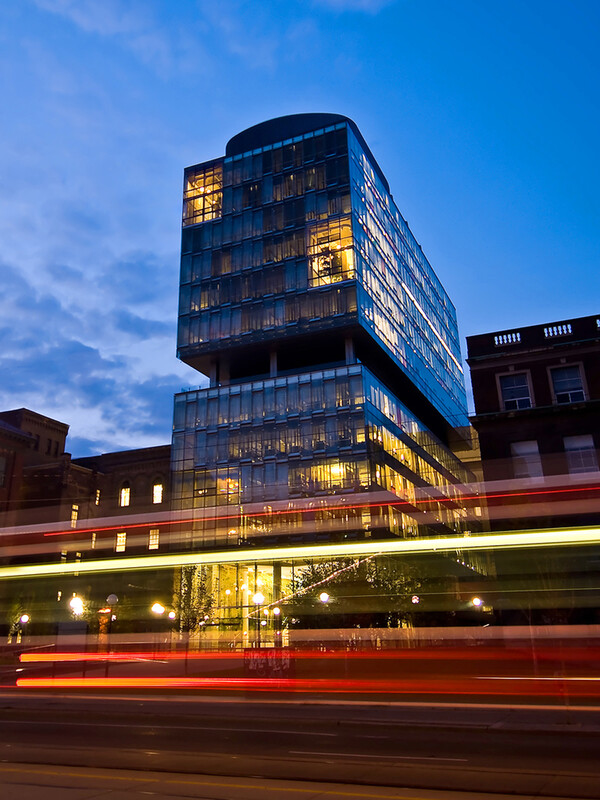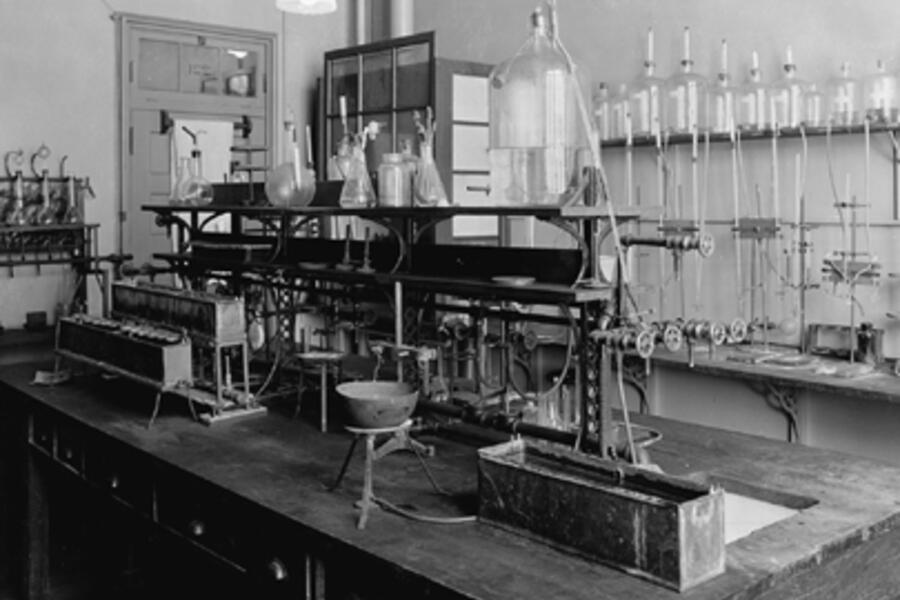Main Second Level Navigation
Breadcrumbs
- Home
- About Us
- History of the Donnelly Centre
Built for 21st Century Science

In the late 1990s, there was no human genome sequence, no wide-spread stem cell technologies, and DNA sequencing was slow and expensive. Nevertheless, University of Toronto Professors James Friesen and Cecil Yip foresaw that new genomic technologies would open up massive progress in biomedical research. Anticipating the growing need for interdisciplinary approaches, they envisioned a research institute in which experts from different fields of science can work together towards solving the next big questions in human biology.
Thanks to an investment from the Government of Canada, the province of Ontario, private sector companies and Terrence J. Donnelly, a philanthropist with a vision, that revolutionary idea materialized into a world-renowned institute for biomedical research – the Donnelly Centre.
On November 5, 2005, the Donnelly Centre for Cellular and Biomolecular Research opened its doors to world-class researchers in biology, computer science, engineering, chemistry and pharmacy under one joint roof, where they could feed off each other’s expertise to unearth the clues to the world's most devastating diseases.
The Donnelly Centre has been a tremendously successful experiment in interdisciplinary research and has established a new paradigm for exploring biology in the genomic eraTrevor Young, former Dean, Temerty Faculty of Medicine
The architecture of the building is part of the science. The open concept labs and social space give our scientists an ideal place where they can interact, collaborate and share ideas.
Nestled in the heart of Toronto’s discovery district, the Donnelly Centre houses 35 faculty and some 500 research staff and trainees.
Donnelly Centre investigators have made key insights about the biology of cells and genes that underpins health and disease. These advances range from tracing how genetic errors interact to affect disease, to understanding how proteins regulate gene expression, to engineering new technologies for the manipulation of human cells and tissue regeneration. As well as nurturing its existing community of researchers, the Centre continues to recruit world-class scientific talent from other leading institutes and this has been a key part of its success.
Learn about the Banting and Best Department of Medical Research whose legacy the Donnelly Centre was built on

